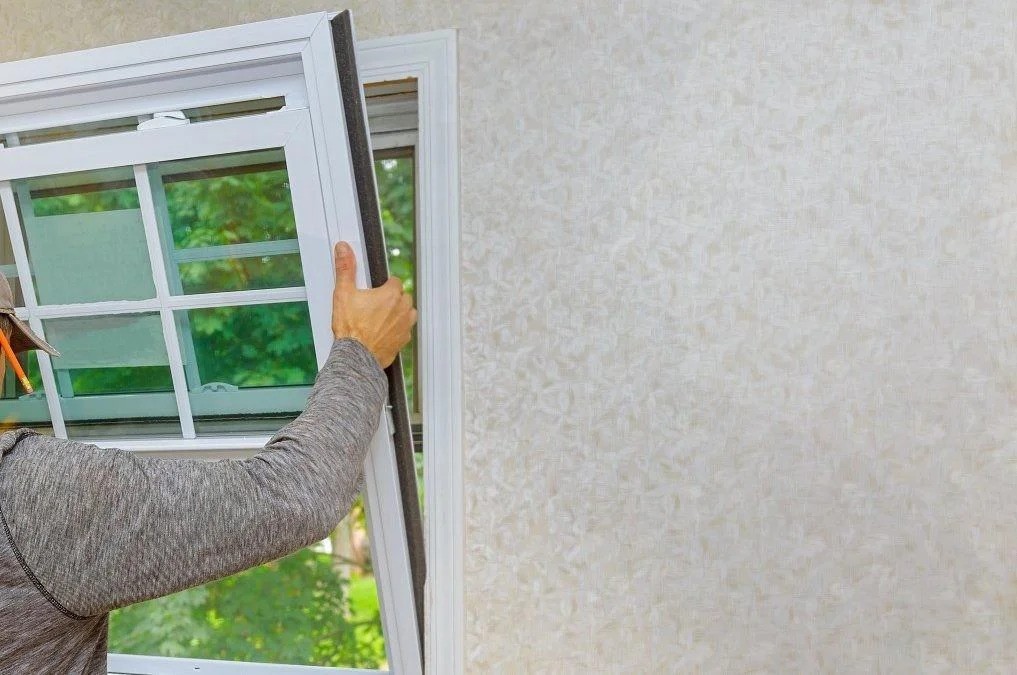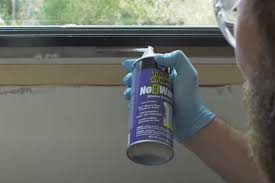How To Install A Window In A Blank Wall?
Installing a new window on a blank wall can bring natural light into your home, provide fresh air, and improve the overall look of a room. Whether you're adding a window for the first time or replacing an old one, this guide will help you through each step. In this article, we will explain how to install a window in a blank wallusing simple techniques and easy-to-follow instructions.
We'll cover everything from planning and preparation to the final touches, ensuring you have all the information you need to complete this project successfully. Before you start, it's crucial to wear the appropriate safety gear, such as gloves, safety glasses, and a dust mask. Ensure you're comfortable using power tools, and always follow the manufacturer's instructions. Be cautious when handling heavy materials and sharp tools.
Tools And Materials Needed
Tools
- Measuring tape -For accurate measurements.
- Level -To ensure everything is straight and even.
- Stud finder -To locate wall studs.
- Utility knife -For scoring drywall.
- Circular saw - For cutting through the wall.
- Reciprocating saw -For detailed cutting.
- Hammer and nails -For securing framing.
- Screwdriver -For fastening screws.
- Caulking gun -For applying sealant.
Materials
- Window unit -The window you plan to install.
- Lumber for framing (2x4s) -For constructing the window frame.
- Nails and screws -For securing materials.
- Flashing tape -For weatherproofing.
- Insulation foam -For sealing gaps around the window.
- Exterior and interior trim -For finishing touches.
- Caulk -For sealing around the window.
When working on home improvement projects, incorporating modern technology can significantly enhance the comfort and convenience of your living space. For example, exploring the best chatbotscan offer an innovative way to integrate smart technology into your home environment.
Planning And Preparation
Choose The Right Location
Select a location that will maximize the benefits of the new window. Consider the amount of natural light, the view, and the room’s layout. Avoid placing the window near plumbing or electrical wiring to prevent complications.
Measure And Mark The Wall
Measure the window dimensions and transfer these measurements to the wall. Use a level to ensure the lines are straight. Mark the top, bottom, and sides of the window opening with a pencil. Double-check all measurements to ensure accuracy.
Obtain Necessary Permits
Check local building codes and regulations. Visit your local building authority or website to determine if you need a permit. Obtain the necessary permits to avoid fines and ensure your project complies with safety standards.
Remove The Wall Section
Cut The Drywall
Using a utility knife or drywall saw, carefully cut along the marked lines. Remove the drywall to expose the wall studs. Wear a dust mask to avoid inhaling dust particles.
Remove Insulation And Studs
If there's insulation in the wall, remove it carefully. Use a reciprocating saw to cut through the studs, making sure not to damage any electrical wires or plumbing. Clear out any debris and ensure the opening is clean and ready for framing.
Preparing The Opening
Ensure the opening is clean and free of obstructions. Check for hidden electrical wires or plumbing and relocate them if necessary. The opening should be slightly larger than the window to allow for shims and adjustments.
Framing The Window Opening
Installing The Header
Cut a piece of lumber to fit the width of the window opening. The header supports the weight of the wall above the window. Secure it above the opening using nails or screws, ensuring it is level and properly supported.
Add King And Jack Studs
King studs run from the floor to the ceiling on either side of the window. Jack studs support the header and run from the bottom of the header to the floor. Cut and install these studs, ensuring they are plumb and securely attached.
Ensuring Level And Plumb
Use a level to ensure all framing elements are straight and plumb. Adjust as needed to maintain accuracy. Secure all connections with nails or screws for stability.
Installing The Window
Positioning The Window
Carefully lift the window into the framed opening. Use shims to adjust the window so it is level and plumb. Check that the window opens and closes smoothly.
Securing The Window In Place
Once the window is positioned correctly, secure it by driving nails or screws through the window frame into the surrounding studs. Check alignment frequently to ensure the window remains level.
Installing Flashing And Insulation
Apply flashing tape around the window to prevent water infiltration. Add insulation around the window frame to improve energy efficiency and reduce drafts.
Sealing And Insulating
Apply Caulk And Foam Sealant
Use a caulking gun to apply a bead of caulk around the window, sealing any gaps between the window frame and the wall. For larger gaps, use foam sealant. Allow the sealant to dry completely.
Add Insulation Around The Window
Place insulation around the window frame inside the wall cavity. This helps to prevent drafts and improves the window's overall energy efficiency.
Check For Air Leaks
Inspect the window installation for any air leaks. Light a candle and move it around the edges of the window; if the flame flickers, you may have a leak. Address any issues by adding more caulk or sealant as needed.
Finishing The Interior
Installing Drywall
Cut pieces of drywall to fit around the window frame. Secure the drywall to the wall using screws or nails. Ensure the drywall fits snugly around the window.
Apply Joint Compound And Sanding
Apply joint compound to the seams and screw holes. Allow it to dry, then sand it smooth. Repeat as necessary to achieve a seamless finish.
Painting And Trim Work
Paint the drywallto match the surrounding wall. Install trim around the window for a finished look. Use a nail gun or hammer to secure the trim, and apply caulk to fill any gaps between the trim and the wall.
Finishing The Exterior
Installing Exterior Trim And Siding
Cut and install exterior trim around the window. Replace any siding that was removed, ensuring it fits snugly against the trim. Secure the siding with nails or screws.
Applying Exterior Caulk And Sealant
Apply exterior caulk around the trim to seal out moisture. Inspect the entire installation to ensure it is weatherproof and secure.
Final Inspection
Perform a final inspection to check for any issues. Ensure the window operates smoothly and all gaps are sealed.
Final Touches And Cleanup
Clean The Work Area
Remove all tools and debris from the work area. Clean the window and surrounding area to remove any dust or smudges. Properly dispose of any waste materials.
Inspect The Window Installation
Check the window installation one last time for any issues. Ensure everything is secure, level, and weatherproof. Test the window to ensure it opens and closes smoothly.
Maintaining The New Window
Regularly check the window for signs of wear or damage. Keep the window clean and lubricate any moving parts as needed. Inspect caulking and seals annually to maintain energy efficiency. For more information on how to maintain a new window, visit thehookweb.com.
FAQs About How To Install A Window In A Blank Wall
How Do You Board A Window From The Inside?
If you have to board up your windows from the inside (e.g., if the storm is already raging outside), place security window film over the glass and tape it down. This isn't the best way to protect your windows and home, but it will help prevent shattered glass (and water) from getting in.
How Much To Add A Window To An Existing Wall?
The cost of cutting a new window into an existing wall varies based on several factors, including the type of wall (e.g., brick, concrete, or cinder block) and the window size. On average, prices range from $700 to $900 for a new window cut out in standard walls.
What Attaches A Window To A Wall?
The window frame is the outermost portion of the window, and the part that is connected to the wall itself. Made up of the head, jambs, and sill, the window frame encases and protects all of the window's other components.
Conclusion
By following this guide, you now know how to install a window in a blank wall. Adding a window can make a big difference in your home, making it brighter and more pleasant. Remember to take your time, follow each step carefully, and prioritize safety.
With the right tools and materials, installing a window can be a rewarding DIY project. Regular maintenance will help keep your new window in great condition for many years to come. Enjoy the improved light and fresh air that your new window brings to your home

